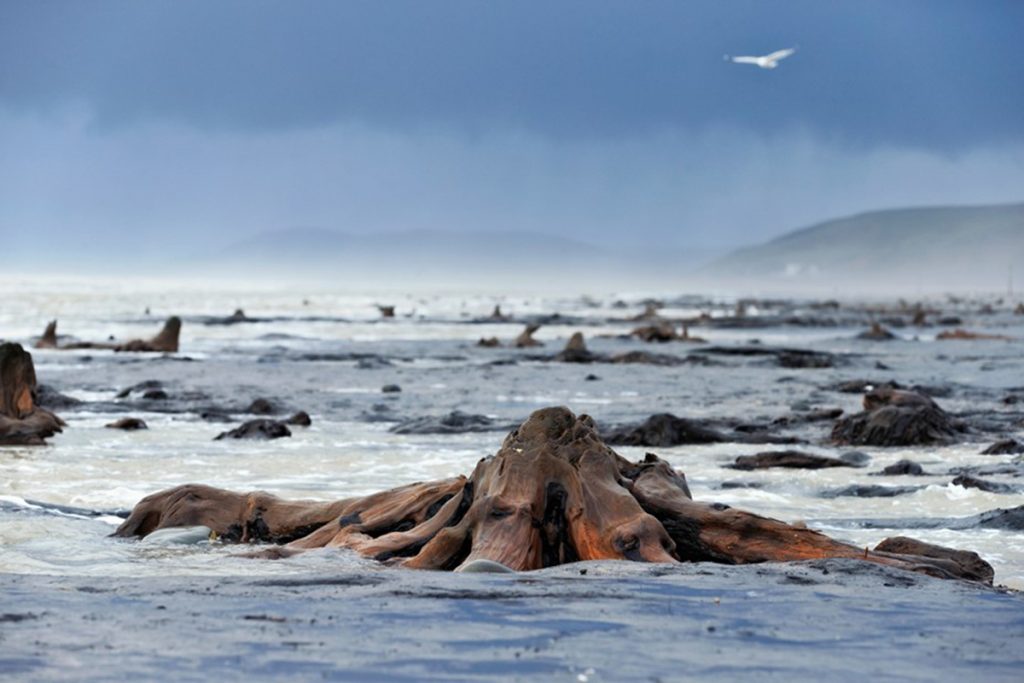DEEP down beneath the Atlantic Ocean, Plato wrote, is the lost city of Atlantis.
This mythical land has fired up the imagination for millenia, but a Welsh version, Cantre’r Gwaelod, hasn’t received quite the same level of fame.
Dating back centuries, the story of Cantre’r Gawelod – The Lost Land of Wales – is equally as enticing as that of Atlantis.
Many versions of the same story exist to explain how this area came to be claimed by the sea. Until about the 17th Century, the lost land was called Maes Gwyddno (the land of Gwyddno).
This early legend has it that the land was drowned when the priestess of a fairy well allowed the water to overflow.
But the legend which is known and told today, calls the land Cantre’r Gwaelod, which extended some 20 miles west of the current shoreline into what is now Cardigan Bay, and was ruled as part of the Kingdom of Meirionnydd by Gwyddno Garanhir, born circa 520 AD.
The land was said to be extremely fertile, so much so that it was said that any acre there was worth four acres elsewhere.
The catch was that the land depended on a dyke to protect it from the sea. The dyke had sluice gates that were opened at low tide to drain the water from the land, and closed as the tide returned.

According to the story, around 600 AD, one night a storm blew up from the south west, driving the spring tide against the sea walls.
The appointed watchman, Seithennin, a heavy drinker and friend of the King, was at a party in the King’s palace near Aberystwyth. Some say he fell asleep due to too much wine or that he was too busy having fun to notice the storm and to shut the sluices.
The water gates were left open, and the sea rushed in to flood the land of the Cantref, drowning over 16 villages.
The King and some of his court managed to escape by running to safety along Sarn Cynfelin, Gwyddno Garahir and his followers were forced to leave the lowlands and make a poorer living in the hills and valleys of Wales.
Another, more bawdy version, maintains that Seithennin was a visiting local King, who, at the time of the storm, was intent on amorously distracting the fair maiden Mererid, who was in charge of the sluice gates. Successful in his mission, Mererid was therefore unable to shut the gates, and the land was flooded.
Cantre’r Gwaelod was said to cover much of the lowlands now beneath Cardigan Bay, and many geographical features are connected to the legend.
The Sarnau, single ridges several miles long, which run at roughly right angles to the shore, are located between each of the four river mouths in the north of the Bay.
Legend has it that these ridges are the remains of causeways built to give access to the present mainland at high tide, but they are probably the remains of glacial moraines – formations of gravel, clay, sand and boulders left behind as the glaciers melted away at the end of the last Ice Age.
The legend has inspired many poems and songs throughout the ages. It is first thought to be mentioned in the 750-year old Black Book of Carmarthen.
The Black Book, which was named after the colour of its binding, was written in 1250, and contained poems and much older material relating to events that had taken place centuries earlier, including a poem about Cantre’r Gwaelod.
The poem is called “Boddi Maes Gwyddno”, The Drowning of the Land of Gwyddno, and tells the early version of story where the maiden Mererid is held responsible for allowing the deluge that floods the land.
Whichever version of the legend you choose, it is said that if you listen closely you can hear the bells of the lost city ringing out from under the sea, especially on quiet Sunday mornings, and particularly if you’re in Aberdyfi, which is famous in Welsh folk legend as being the nearest place on dry land to Cantre’r Gwaelod.
The well-known song ‘The Bells of Aberdyfi’ became popular during the 18th Century in the music halls and is still popular during sing-songs in Welsh pubs today.


















Add Comment